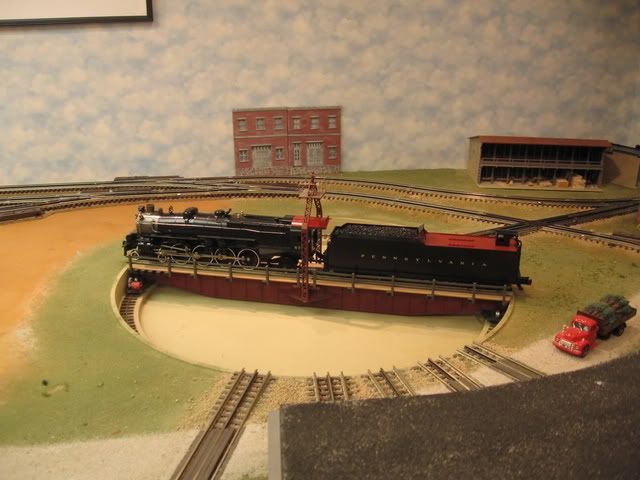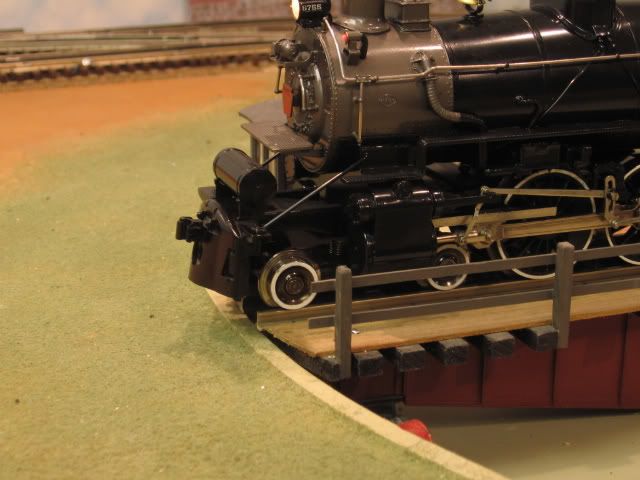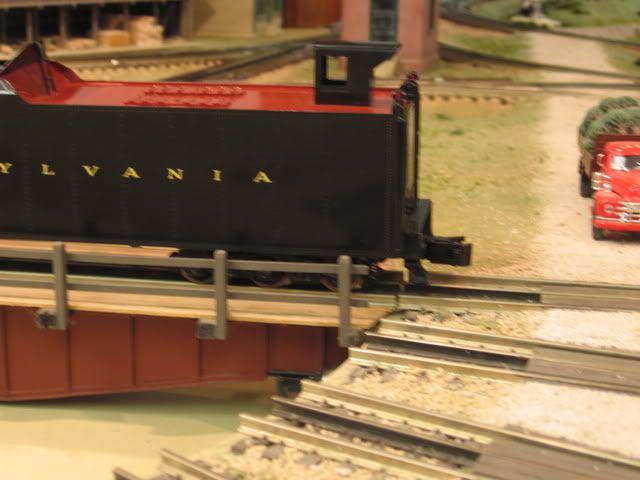Nick and Lee:
Outstanding display cases.....and contents. Very well done!
I noticed something comparable when I finally obtained a Lionel UP FEF (in black) a few months ago. My UP 844 is almost the same length as my Lionel Nickel Plate 2-6-6-2 Mallet. And yes - a lot of that difference is due to the Tender....but the loco isn't too far off either...and the 54" vs 80" drivers make for some additional contrast.
It drives home the point that the 844 was capable of going up and over the Rocky, Wasatch, and Sierra Nevada mountains....haulling passengers or freight equally well. In contrast, NKP 941 and bretheren hauled long but slow coal trains through the northern Appalachians or headed up freight trains on the relatively level coast line of Lake Erie. Different use/application, different time, different locomotive.....all part of the evolution of the steam engine.
Along the same lines of what Lee mentioned, I don't really run the 2-6-6-2 that much. The engine overhang just looks odd on my O-72 curves, IMHO. But I do think that the loco might look cool on a dynamic running base in my office.
The 844 does seem a bit cramped on the 0-72 curves but I'm enlarging my layout to O-96 soon (I hope.) There are a number of videos on YouTube where guys are actually HighBalling their 844s on O-96 curves at what seem to be 60 scale MPH or more...and everything seems "right".
My scale NKP Berks by Lionel and MTH both seem right at home on O-72 curves.
My diesels and scale NKP & NYC Hudsons see the inner loop with O-63 curves most often.
Personally, I enjoy running the scale 2-8-4s and 4-8-4s the most.....not that I don't enjoy some variety now and then.





